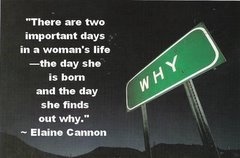The shortest day of the year
The winter solstice is not only a pagan holiday or an alternative to Christmas, it's a planetary event that impacts the world around us, both our cultural and religious traditions, our perceptions and our experiences. The conditions that cause the solstices (one in summer, the other in winter), are largely responsible for the seasons, which impact our livelihoods, the supply of food, and the rhythms of life that we live by. A deeper understanding of the solstice can help enrich winter traditions of all faiths and cultures.
What is the Winter Solstice?
Solstice comes from the Latin words sol (sun) and sistere (standing still), and literally means sun standing still. This root meaning is easy to understand once you know what a solstice is on a planetary level.
In relation to our sun, the earth's axis is tilted. This tilted axis is measured at about a 23.5 degree angle. Because of this tilt, as the earth orbits the sun over a one-year period, some parts of the planet will be closer to the sun than others, receiving more or less sunlight depending on the time of year. This is the primary cause of our seasons. When the earth's Northern Hemisphere is farthest from the sun, it is winter. Conversely, when the earth reaches the other side of the sun, the Northern Hemisphere will be closer to the sun, and we will experience summer. The reverse is true of the Southern Hemisphere. The winter solstice in the north is thus the summer solstice in the south. In this article, we will concentrate on the winter solstice in the Northern Hemisphere.
The root meaning of solstice, sun standing still, makes sense when one thinks of the point at which the Northern Hemisphere is farthest from the sun. The distance growing between parts of the earth and the sun has ceased to increase; therefore, the sun is standing still. Winter solstice is often called the shortest day of the year because it has the fewest hours of sunlight.
Solstice Celebrations
All around the world, holidays, rituals and traditions have grown up around the time of the winter solstice. Why might this be? We can look at it from an anthropological point of view. Ancient people noticed that around a certain time every year, the presence of the sun in the sky began to diminish, the weather grew colder and plants that once flourished began to die and go dormant. Later, they observed that around Dec. 25, the days began to grow longer again. Winter was waning, and the sun waxing.
Ancient peoples had to depend on their stores of food to get them through the harsh and unproductive winters. Many feared the sun would not return, and so rituals and traditions were born that honored the sun and encouraged its return. In the Northern Hemisphere, many celebrations and rituals have therefore come to be timed around the winter solstice. These celebrations and rituals are often related to the death and rebirth associated with the waning and waxing of the sun's presence.
Winter Solstice and Ancient Societies
In ancient Egypt, the man/god Osiris was said to have died and been reborn on Dec. 21. In very ancient Greece, there was a ritual called Lenaea (the Festival of the Wild Women), where a group of women would tear apart and devour a man. Later in the ritual, the man would be reborn as the god Dionysius. And later in Greek history, the human sacrifice would be replaced by the sacrifice of a goat. In Ancient Rome, Saturnalia was a feast day that took place in late December. There were many god-man nativity celebrations in ancient Rome, all celebrated around the solstice. All over Europe there are structural testaments to people's fascination with the winter solstice. Most famous is Newgrange in Ireland, a prehistoric circular structure designed so that a shaft of sunlight would be let in at sunrise on the winter solstice.
Christianity
It wasn't until the 4th century CE that Christianity became the official religion of the Roman Empire. This was also when church leaders wanted to establish the birth date of Jesus Christ. There is no real proof of when Jesus was born, but there is information in the Gospels that suggests he may have been born some time in the fall. Church leaders settled on Dec. 25, because this was the time of many nativity celebrations for pagan gods already taking place in Rome. Many of the traditions that we associate with Christmas actually have pagan roots: mistletoe, evergreen trees, holly, ivy, the yule log and gift-giving. It is for this reason that certain religious groups like the Jehovah's Witnesses do not acknowledge Christmas as a legitimate Christian holiday.
Other Traditions
There are countless more holidays and celebrations that take place around the winter solstice. In Iran, many people celebrate Shabe-Yalda, a name which has to do with the rebirth of the sun. They sit around a low table, tell stories and read poetry all night long, while eating watermelon, pomegranate and a special mixture of fruits and nuts.
Today, neopaganist religions, which seek to reclaim many pagan traditions, have solstice celebrations. Wiccans, followers of the neopaganist Wicca religion, celebrate Yule (a time of deep thought and planning for the future) around the winter solstice.
Mark Your Calendar
This year the winter solstice occurs in North America on Dec. 21 at 4:22pm PST and 7:22pm EST. This will be the shortest day of the year, but also the beginning of the end of winter and the herald of the birth of new life in a new year.
What is the Winter Solstice?
Solstice comes from the Latin words sol (sun) and sistere (standing still), and literally means sun standing still. This root meaning is easy to understand once you know what a solstice is on a planetary level.
In relation to our sun, the earth's axis is tilted. This tilted axis is measured at about a 23.5 degree angle. Because of this tilt, as the earth orbits the sun over a one-year period, some parts of the planet will be closer to the sun than others, receiving more or less sunlight depending on the time of year. This is the primary cause of our seasons. When the earth's Northern Hemisphere is farthest from the sun, it is winter. Conversely, when the earth reaches the other side of the sun, the Northern Hemisphere will be closer to the sun, and we will experience summer. The reverse is true of the Southern Hemisphere. The winter solstice in the north is thus the summer solstice in the south. In this article, we will concentrate on the winter solstice in the Northern Hemisphere.
The root meaning of solstice, sun standing still, makes sense when one thinks of the point at which the Northern Hemisphere is farthest from the sun. The distance growing between parts of the earth and the sun has ceased to increase; therefore, the sun is standing still. Winter solstice is often called the shortest day of the year because it has the fewest hours of sunlight.
Solstice Celebrations
All around the world, holidays, rituals and traditions have grown up around the time of the winter solstice. Why might this be? We can look at it from an anthropological point of view. Ancient people noticed that around a certain time every year, the presence of the sun in the sky began to diminish, the weather grew colder and plants that once flourished began to die and go dormant. Later, they observed that around Dec. 25, the days began to grow longer again. Winter was waning, and the sun waxing.
Ancient peoples had to depend on their stores of food to get them through the harsh and unproductive winters. Many feared the sun would not return, and so rituals and traditions were born that honored the sun and encouraged its return. In the Northern Hemisphere, many celebrations and rituals have therefore come to be timed around the winter solstice. These celebrations and rituals are often related to the death and rebirth associated with the waning and waxing of the sun's presence.
Winter Solstice and Ancient Societies
In ancient Egypt, the man/god Osiris was said to have died and been reborn on Dec. 21. In very ancient Greece, there was a ritual called Lenaea (the Festival of the Wild Women), where a group of women would tear apart and devour a man. Later in the ritual, the man would be reborn as the god Dionysius. And later in Greek history, the human sacrifice would be replaced by the sacrifice of a goat. In Ancient Rome, Saturnalia was a feast day that took place in late December. There were many god-man nativity celebrations in ancient Rome, all celebrated around the solstice. All over Europe there are structural testaments to people's fascination with the winter solstice. Most famous is Newgrange in Ireland, a prehistoric circular structure designed so that a shaft of sunlight would be let in at sunrise on the winter solstice.
Christianity
It wasn't until the 4th century CE that Christianity became the official religion of the Roman Empire. This was also when church leaders wanted to establish the birth date of Jesus Christ. There is no real proof of when Jesus was born, but there is information in the Gospels that suggests he may have been born some time in the fall. Church leaders settled on Dec. 25, because this was the time of many nativity celebrations for pagan gods already taking place in Rome. Many of the traditions that we associate with Christmas actually have pagan roots: mistletoe, evergreen trees, holly, ivy, the yule log and gift-giving. It is for this reason that certain religious groups like the Jehovah's Witnesses do not acknowledge Christmas as a legitimate Christian holiday.
Other Traditions
There are countless more holidays and celebrations that take place around the winter solstice. In Iran, many people celebrate Shabe-Yalda, a name which has to do with the rebirth of the sun. They sit around a low table, tell stories and read poetry all night long, while eating watermelon, pomegranate and a special mixture of fruits and nuts.
Today, neopaganist religions, which seek to reclaim many pagan traditions, have solstice celebrations. Wiccans, followers of the neopaganist Wicca religion, celebrate Yule (a time of deep thought and planning for the future) around the winter solstice.
Mark Your Calendar
This year the winter solstice occurs in North America on Dec. 21 at 4:22pm PST and 7:22pm EST. This will be the shortest day of the year, but also the beginning of the end of winter and the herald of the birth of new life in a new year.
By:Jamie Nishi
***
The shortest day of the year...I will be working on my next painting...and minding the children that are off for the holiday.
I'll post a picture of my work for the day later on, if it amounts to anything...
Heather
www.badkittyartstudio.com
***
The shortest day of the year...I will be working on my next painting...and minding the children that are off for the holiday.
I'll post a picture of my work for the day later on, if it amounts to anything...
Heather
www.badkittyartstudio.com







No comments:
Post a Comment